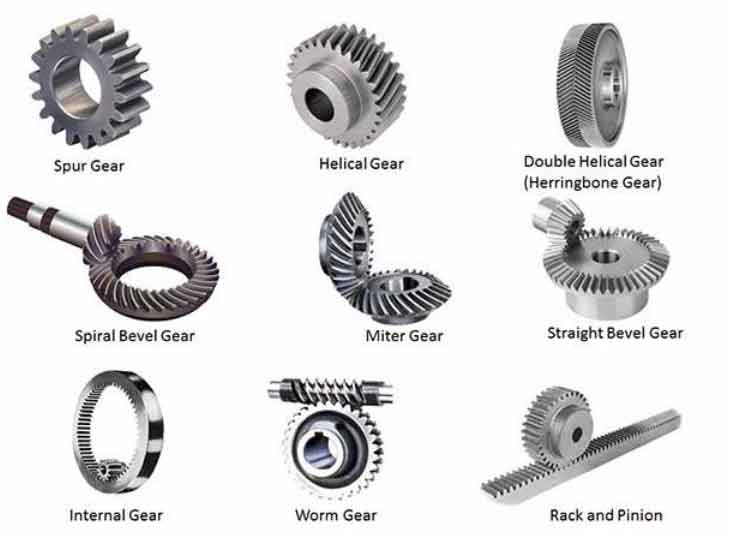Helical gears and rack and pinion systems are both commonly used gear types in various applications. While they serve similar purposes of transmitting motion and power, there are distinct differences between the two. Let’s compare helical gears and rack and pinion systems in terms of their design, applications, advantages, and disadvantages.

- Design:
- Helical Gears: Helical gears have curved teeth that are cut at an angle to the gear axis. The teeth form a helix pattern around the gear. They are usually mounted on parallel shafts, and the contact between the teeth gradually increases as the gears rotate, resulting in a smooth and quiet operation.
- Rack and Pinion: A rack and pinion system consists of a straight toothed rack (a flat bar with teeth) and a pinion (a small gear with straight teeth). The pinion meshes with the teeth on the rack and converts rotational motion into linear motion or vice versa.
- Applications:
- Helical Gears: Helical gears are commonly used in applications where smooth, efficient, and quiet operation is required, such as automotive transmissions, industrial machinery, and power generation equipment.
- Rack and Pinion: Rack and pinion systems are widely used in applications that require linear motion, such as steering systems in automobiles, CNC machines, robotics, and linear actuators.
- Advantages:
- Helical Gears:
- Higher load-carrying capacity compared to rack and pinion systems.
- Smooth operation with minimal noise and vibration.
- Multiple teeth in contact at any given time, resulting in high efficiency.
- Can transmit power between parallel or non-parallel shafts with proper gearing arrangements.
- Rack and Pinion:
- Simple and compact design.
- Convert rotational motion to linear motion directly and efficiently.
- Suitable for applications that require high precision and positioning accuracy.
- Easy to assemble and maintain.
- Helical Gears:
- Disadvantages:
- Helical Gears:
- Axial thrust generated due to helical teeth, requiring proper thrust bearing arrangements.
- More complex design and manufacturing process compared to rack and pinion systems.
- Requires lubrication for smooth operation.
- Rack and Pinion:
- Limited load-carrying capacity compared to helical gears.
- Susceptible to wear and backlash, affecting accuracy.
- Higher friction compared to helical gears, resulting in lower efficiency.
- Helical Gears:
Helical gears are suitable for applications requiring high load capacity, smooth operation, and efficient power transmission, while rack and pinion systems are ideal for converting rotational motion into linear motion with high precision. The choice between these gear types depends on the specific requirements of the application, including load capacity, motion type, noise considerations, and positional accuracy.
